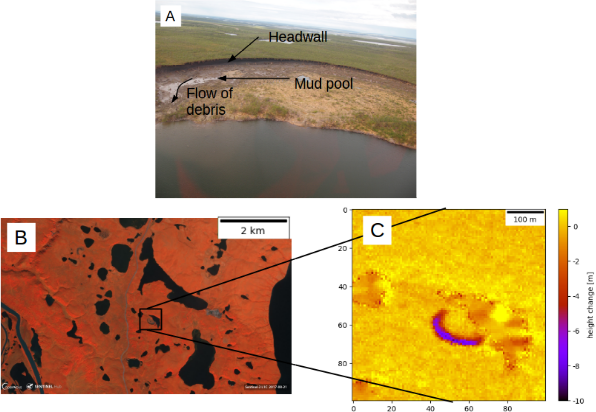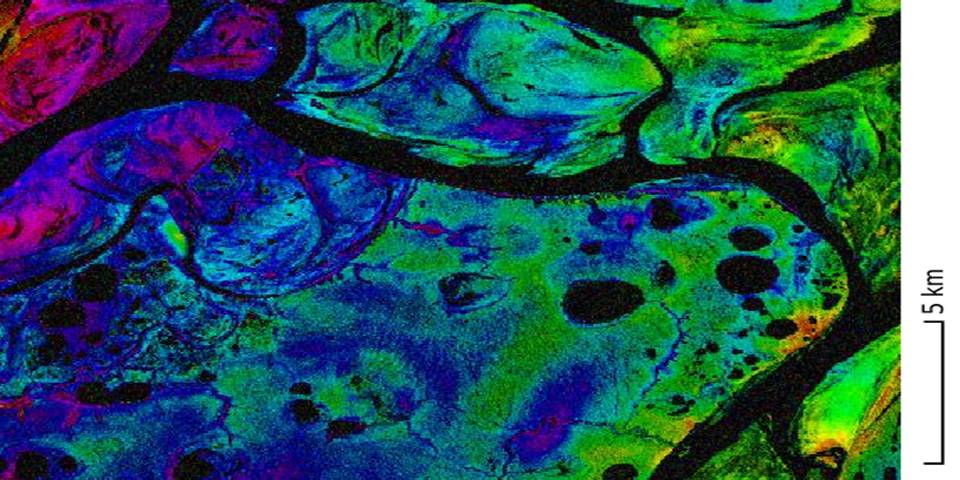Permafrost-thaw and soil moisture

We study how plant growth and changes in soil moisture affect space-borne radar measurements of deformations of the Earth's surface
Using a technique called Differential Interferometric SAR (DInSAR), scientists can measure deformations of the Earth’s surface from space. The centimetre accuracies that can be achieved have made this technique useful for characterizing many processes and movements, such as those related to volcanic activities, the movement of glaciers, or subsidence caused by permafrost-thaw. This measurement works by combining two radar acquisitions from different times. During this time gap, the moisture content of the soil can change and such changes can impact the DInSAR signals and thus the deformation estimates.
We want to characterize the properties and magnitudes of these effects. To this end, we analyse satellite and airborne measurements, and we also conduct dedicated experiments using the group's ground-based radar systems. Our goals are:
- to model the effect of soil moisture changes in mineral and organic soils on DInSAR measurements
- to elucidate the impact of vegetation dynamics on these measurements
- to estimate soil moisture changes and vegetation parameters from radar data
- to improve deformation estimates by correcting for these effects and quantifying the associated uncertainties
